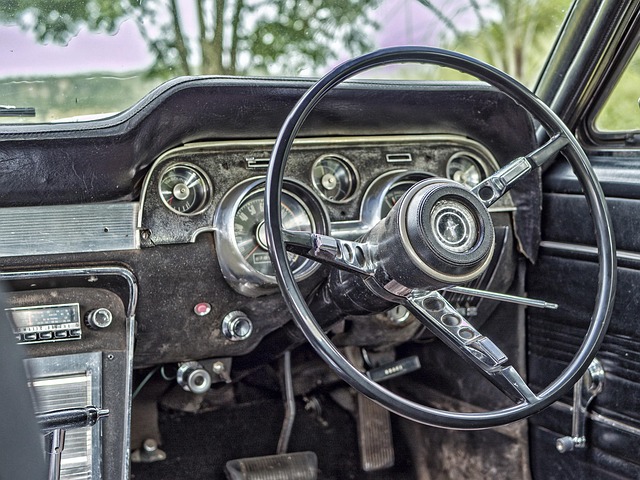Looking to register your car in California? This guide walks you through the entire process, ensuring a smooth experience. From understanding key requirements and gathering essential documents to completing crucial steps like DMV VIN verification, we’ve got you covered. By following these straightforward instructions, you’ll be on your way to securing your vehicle’s registration in no time, saving you time and effort.
- Understand California Car Registration Requirements
- Gather Necessary Documents for Registration
- Visit Your Local DMV Office or Use Online Services
- Complete Vehicle Identification Number (VIN) Verification
- Pay Registration Fees and Receive Your Plate
Understand California Car Registration Requirements

Before registering your car in California, it’s crucial to understand the state’s specific requirements for vehicle registration. The California Department of Motor Vehicles (DMV) mandates several key steps and verifications to ensure compliance with local laws. One essential aspect is the verification of a Vehicle Identification Number (VIN). This unique code, typically located on the vehicle’s chassis, serves as a crucial identifier during the registration process.
A mobile vin verifier or even a simple vin inspection can help you gather this information accurately and efficiently. By providing your VIN to the DMV during the registration application, you enable them to cross-reference data with their records, ensuring the vehicle’s history is checked thoroughly. This step is vital for both new and used car owners, as it helps prevent fraud and ensures that all vehicles on California’s roads meet safety standards.
Gather Necessary Documents for Registration

Before you start the registration process, ensure you have all the required documents ready. The California Department of Motor Vehicles (DMV) will need a variety of information and paperwork to complete your car’s registration. This includes proof of identification, such as a valid driver’s license or state-issued ID card, along with verification that the vehicle is insured for road use.
Additionally, you’ll require a completed Vehicle Registration Application form, which can be obtained from the DMV or downloaded online. A key document for your car’s registration is the Vehicle Identification Number (VIN) verification. This step can be conveniently completed via a mobile VIN inspection service, allowing you to verify the vehicle’s history and ensure it complies with California’s standards before submitting your application.
Visit Your Local DMV Office or Use Online Services

When registering your car in California, one of the crucial steps is to ensure accurate and legitimate documentation. The first port of call should be your local Department of Motor Vehicles (DMV) office. Here, you can expect a range of services tailored to your needs, including vehicle registration and title transactions. Staff members are equipped to guide you through the process, making it an ideal option for those seeking personalized assistance.
Alternatively, California’s DMV offers efficient online services that simplify the registration process. One notable feature is the ability to conduct a DMV VIN verification, allowing you to confirm key vehicle details remotely. Moreover, some third-party applications provide mobile VIN inspection and verification services, offering added convenience by enabling you to complete initial checks from the comfort of your home or on the go, using just your smartphone.
Complete Vehicle Identification Number (VIN) Verification

To register your car in California, a crucial step is ensuring your vehicle’s Vehicle Identification Number (VIN) is verified by the Department of Motor Vehicles (DMV). This process involves confirming that the VIN on your car matches the one reported to the DMV and is not altered or tampered with. A mobile vin verifier can facilitate this inspection by providing accurate and quick results, making it a convenient option for California residents.
This verification is essential during the registration process as it safeguards against fraud and ensures only legitimate vehicles are registered. It’s important to note that a valid VIN inspection might require you to present relevant documents and proof of ownership. Alternatively, many mobile vin verification services offer on-site inspections, providing a straightforward and efficient way to meet this requirement for car registration in California.
Pay Registration Fees and Receive Your Plate

After completing your vehicle’s registration application at the California DMV, it’s time to pay the registration fees. These fees vary based on several factors such as the type of vehicle and its age. Once the payment is processed, you’ll receive your vehicle’s unique Identification Number (VIN) verification, which is crucial for the next step.
Before you receive your license plate, ensure a successful vin inspection by using a reliable mobile vin verifier. This digital tool checks your VIN against the DMV database to verify the vehicle’s history and ensures there are no outstanding issues. Upon confirmation, your license plate will be issued and attached to your car, completing your registration process.
Registering a car in California is a straightforward process, ensuring your vehicle complies with state regulations. By understanding the requirements, gathering essential documents, and completing steps like DMV VIN verification, you can efficiently navigate the registration process. Whether visiting a local office or using online services, this guide equips you with the knowledge to successfully register your vehicle and hit the roads legally.
